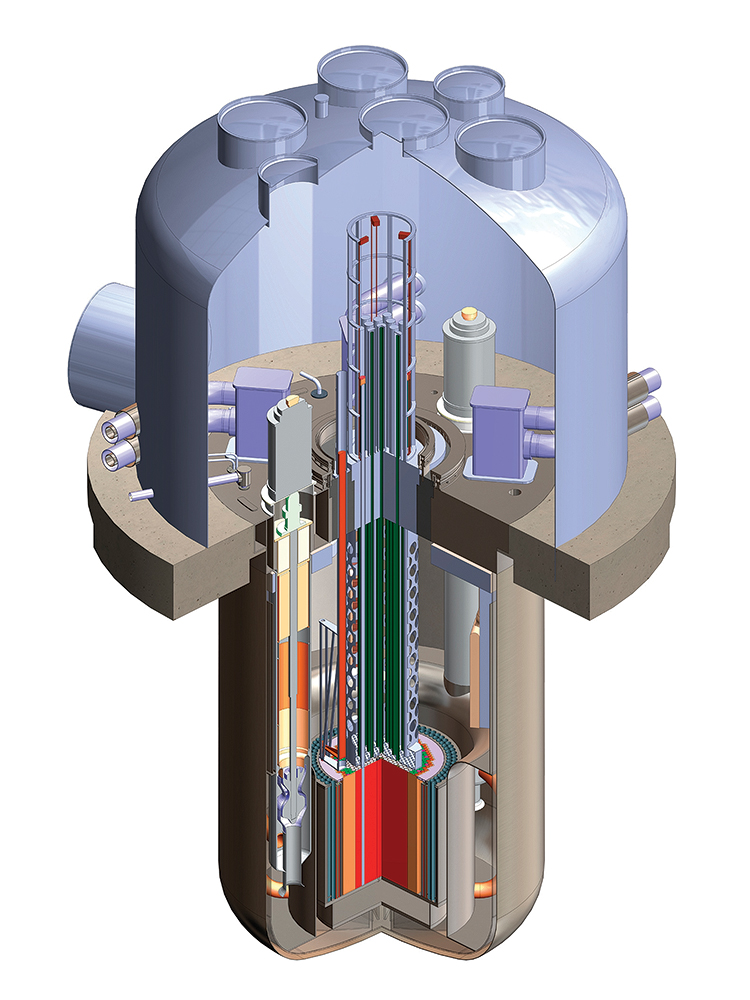Why software’s wealthiest should fund experimental technologies
September 12, 2012

A traveling wave nuclear reactor that can run for more than 30 years without refueling. Image of reactor power concept. (Credit: TerraPower)
In the next few decades, we need more technology leaders to reach for some very big advances, says Nathan Myhrvold, a founder and vice chairman of TerraPower and former chief technology officer of Microsoft, writing in Technology Review.
If 20 of us were to try to solve energy problems — with carbon capture and storage, or perhaps some other crazy idea — maybe one or two of us would actually succeed. If nobody tries, we’ll all certainly fail.
I believe the world will need to rely on nuclear energy. A looming energy crisis will force us to rework the underpinnings of our energy economy. That happened last in the 19th century, when we moved at unprecedented scale toward gas and oil. The 20th century didn’t require a big switcheroo, but looking into the 21st century, it’s clear that we have a much bigger challenge.
As China, India, Brazil, and other parts of the developing world raise their standard of living, they’ll want a lifestyle — and therefore a degree of energy consumption — that matches ours in the United States. Meanwhile, our own energy consumption increases. To meet these demands, the world’s energy generation capability will have to multiply by a factor of at least five in this century, and possibly more.
What about renewable energy? Unfortunately, no such technology can completely replace fossil fuels, which provide base-load power all day and night, regardless of whether the wind is blowing or the sun is shining. There is no carbon-free base-load power source except nuclear energy.
TerraPower offers a path to zero-carbon, proliferation-resistant energy. Yes, there are a lot of challenges — scientific, engineering, and above all, political. The time it takes to develop a nuclear reactor and get it licensed is so daunting that it would be a crazy proposition for any ordinary entrepreneur.
But we are not going it alone or starting from a blank slate. TerraPower is building on decades of research at the U.S. national labs, and some of those labs are now doing important contract work to help us perfect the designs. We’re also working with the U.S. Nuclear Regulatory Commission, and similar agencies in other countries, to help governments understand the details of new types of reactors so that they can regulate them when the technology is ready for commercial deployment.
Though we believe there’s a lot of good TerraPower can do for the world, it’s a for-profit venture. It has to be: competing commercially is the only way any energy option can become sustainable. That said, TerraPower’s investors, which include Khosla Ventures and Charles River Ventures, share the long-term view of its founders. They recognize that the biggest returns come from the biggest advances, and those take time. That long-term view makes it possible to invest in innovation that could revolutionize our energy infrastructure.
Like Jeff Bezos and Elon Musk, I was once a little boy who played with model rockets and aspired to learn nuclear physics. Back then, the idea of science as a dynamic thing that can change lives was captivating. It still is. Our challenge now, especially for those of us whose financial success is the greatest, is to think big.